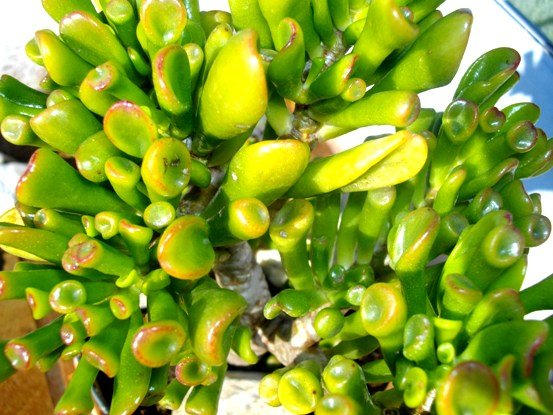Crassula portulacea var. cristata, a window plant

The leaves of Crassula portulacea var. cristata are long and narrow, between cylindrical and cone-shaped. They have a distinct curved, almost circular, but open and skewed ridge at the leaf tip, which is the wider end. The surface within the slightly red ring at the tip has a translucent window that lets sunlight into the leaf. These windows occur on leaves of quite a few southern African succulents, including some Lithops species.
The sunlight is conveyed internally from the translucent window downwards via some transparent crystals of oxalic acid, positioned along the inside of the cylinder. Near the bottom, on the inside of the cylinder, the sunlight reaches grains of chlorophyll found along the inner walls of the leaf. Photosynthesis then occurs here, facilitated by the sunlight within the depths of the succulent leaves (Smith, et al, 1997; www.asknature.org).

